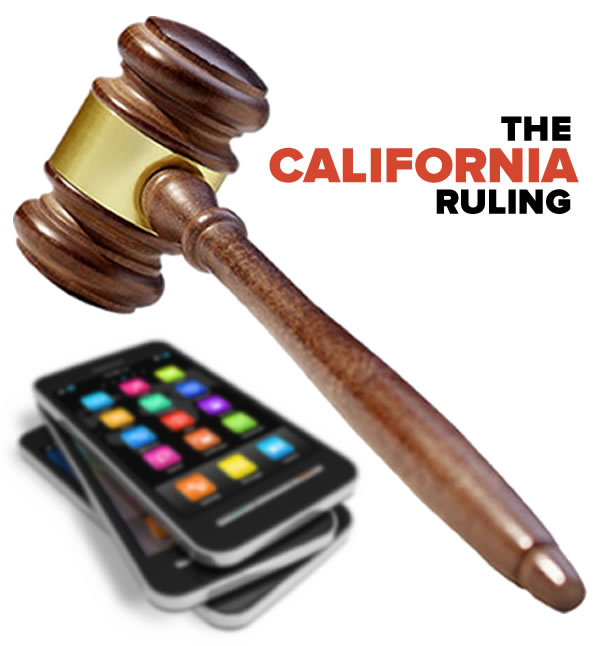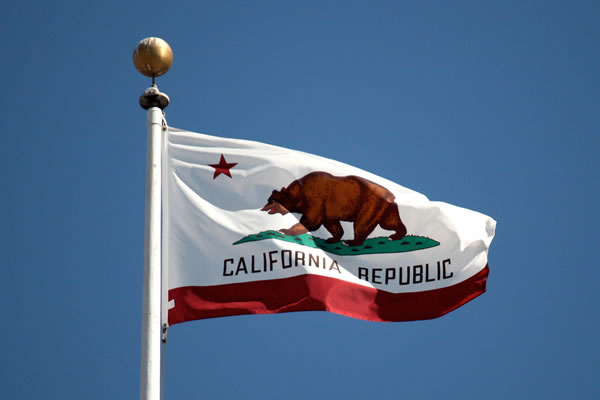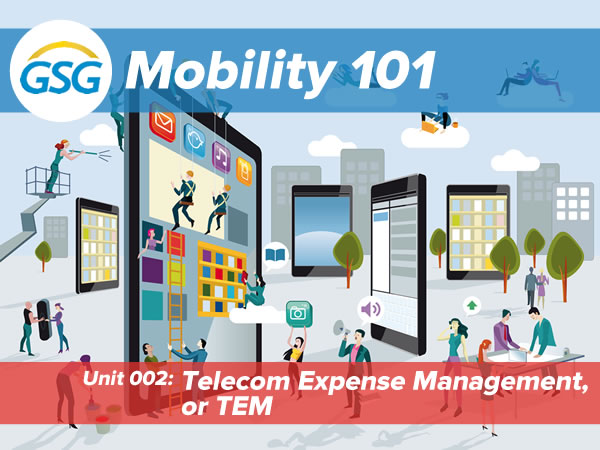
It’s something that the Sugru community (apparently, there is one) has discovered:

In the case of Cochran v. Schwan’s Home Service, Colin Cochran filed a class action suit against his employer, the largest direct-to-home food delivery service in the U.S., on behalf of customer service managers who weren’t being reimbursed for work-related use of personal mobile phones. Cochran won, and the ruling is expected to have a significant impact on the way companies do BYOD, and in some cases, may even “bring it down”, if the somewhat alarmist title of this CIO article covering the case’s outcome is to be believed.

The Second District Appellate Court of California.
The case was first taken to the Los Angeles Superior Court, and then the Second District Appellate Court, where the ruling was made on Tuesday, August 12th. Judge Teresa Sanchez-Gordon had said that a class action was not the best way to resolve the issue, noting that examination was required to resolve the question of whether Cochran or his live-in girlfriend paid his mobile bill. In the end, the court ruled that even if a family member or friend pays the costs of using a personal mobile device, if that device is used for work-related purposes, the employer is still required to provide reasonable reimbursement for the employee.
“If an employee is required to make work-related calls on a personal cell phone, then he or she is incurring an expense for purposes of labor law,” Judge Judith Ashmann-Gerst wrote for the court. “It does not matter whether the phone bill is paid for by a third person, or at all. In other words, it is no concern to the employer that the employee may pass on the expense to a family member or friend, or to a carrier that has to then write off a loss. It is irrelevant whether the employee changed plans to accommodate work-related cell phone usage. Also, the details of the employee’s cell phone plan do not factor into the liability analysis. Not only does our interpretation prevent employers from passing on operating expenses, it also prevents them from digging into the private lives of their employees to unearth how they handle their finances vis-a-vis family, friends and creditors. To show liability under the labor code, an employee need only show that he or she was required to use a personal cell phone to make work-related calls, and he or she was not reimbursed. Damages, of course, raise issues that are more complicated.”

It wasn’t all that long ago that there were predictions that BYOD stipends would eventually go away and that BYOD for work would be like business clothes: something for which employees would cover the costs and not expect any reimbursement. It was expected in some circles that BYOD stipends would disappear just like reimbursements for telecommuters who used at-home wifi did. The ruling will likely not only render those predictions wrong, it may even lead to the return of reimbursement for wifi for work done at home.
Hyoun Park, Principal Consultant at DataHive Consulting who’s been following the case, says that there are some technical wrinkles in the ruling that need to be worked out. “The court didn’t care about whether you bought 100 megabytes or an unlimited plan. They’re just saying that the company should pay for a portion of the bill. So there’s going to be an argument there.”

In the end, organizations in California with BYOD programs or who require their employees to use their own mobile phones for work will need to review how mobile devices are used in their day-to-day business, and if necessary, make adjustments. They’ll need to review their mobile device use policies and decide if they want to continue requiring employees to provide their own mobile devices for work use. If they decide to rely on individual-liable devices, they’ll need to make certain they know which employee-owned mobile assets are being used for work purposes, implement a stipend or reimbursement policy, and have some kind of mobile management platform to stay on top of these measures.
On the other hand, if a California business decides to simply disallow the use of personal mobile devices for work, they’ll need to come up with an alternative for employees who require mobile devices. This arrangement will also require management of all sorts, from a corporate-liable device policy to manage the inventory, and once again, some kind of mobile management platform to watch over these incredibly portable company assets.
While the ruling won’t take effect until 30 days after it was made and applies only in the state of California, there’s a good chance that it’ll soon affect personal mobiles used for business outside The Golden State. We’ll keep you up-to-date on these developments.
Click the graph to see it at full size.
For the first time ever, more than 300 million smartphones were shipped in a single quarter. The market research and analyst firm IDC stated in their most recent press release that according to their Worldwide Quarterly Mobile Phone Tracker data, smartphone vendors shipped a record-breaking 301.3 million units in the second quarter of 2014. In the same quarter in 2014, smartphone vendors shipped 240.5 million, making this year’s change a 25.3% year-over-year increase.
The chart above is based on the table of 2013 and 2014 smartphone shipments included in IDC’s press release, which we’ve reproduced below:
| Operating System |
2Q14 Shipment Volume |
2Q14 Market Share |
2Q13 Shipment Volume |
2Q13 Market Share |
2Q14/2Q13 Growth |
| Android |
255.3 |
84.7% |
191.5 |
79.6% |
33.3% |
| iOS |
35.2 |
11.7% |
31.2 |
13.0% |
12.7% |
| Windows Phone |
7.4 |
2.5% |
8.2 |
3.4% |
-9.4% |
| BlackBerry |
1.5 |
0.5% |
6.7 |
2.8% |
-78.0% |
| Others |
1.9 |
0.6% |
2.9 |
1.2% |
-32.2% |
| Total |
301.3 |
100% |
240.5 |
100% |
25.3% |
Some of IDC’s observations on the data:
 Based on IDC’s numbers, the combined share of Android and iOS is 96.4% this quarter, leaving the remaining players to fight over the remaining 5.6%. Android and iOS were the only mobile operating systems to see year-over-year growth this quarter, with Android shipments up 33%, and iOS shipments up nearly 13%. Every other OS vendor lost share between this year and last.
Based on IDC’s numbers, the combined share of Android and iOS is 96.4% this quarter, leaving the remaining players to fight over the remaining 5.6%. Android and iOS were the only mobile operating systems to see year-over-year growth this quarter, with Android shipments up 33%, and iOS shipments up nearly 13%. Every other OS vendor lost share between this year and last.
You’d never know it from their US site, pictured below, which appears to be solely focused on PCs and servers…

…but Lenovo now sells more mobile devices than PCs. In fact, they’re the number 4 smartphone vendor, according to IDC, who published this data in there Worldwide Quarterly Mobile Phone Tracker report:
| Vendor |
2Q14 Shipment Volume |
2Q14 Market Share |
2Q13 Shipment Volume |
2Q13 Market Share |
2Q14/2Q13 Growth |
| Samsung (Android) |
74.3 |
25.2% |
77.3 |
32.3% |
-3.9% |
| Apple (iOS) |
35.1 |
11.9% |
31.2 |
13.0% |
12.4% |
| Huawei (Android) |
20.3 |
6.9% |
10.4 |
4.3% |
95.1% |
| Lenovo (Android) |
15.8 |
5.4% |
11.4 |
4.7% |
38.7% |
| LG (Android) |
14.5 |
4.9% |
12.1 |
5.0% |
19.8% |
| Others |
135.3 |
45.8% |
97.5 |
40.6 |
38.7% |
Most of Lenovo’s smartphone sales are in China, where they’re the number one smartphone vendor. They aim to change that with the assistance of their recent purchase of Motorola, who’ve been releasing some impressive yet inexpensive smartphones, such as the Moto G and Moto E (which we raved about back in May).
For more, here’s the Wall Street Journal’s Yun-Hee Kim talking to IDC analyst Brian Ma about Lenovo’s next big ambition: to expand their presence in North America and Europe and take on Apple and Samsung:
Thanks to Phil Caruso, GSG’s Director, Channel Programs for the heads-up!

We’ve just posted a new video titled Telecom Expense Management, or TEM. It explains why your business needs TEM, and what makes up a good telecom expense management system.
Here’s the video. We promise it’ll be enlightening and amusing:

This video is the second in our ongoing Mobility 101 series, which covers various aspects of enterprise mobility: mobile technology, applications, services, and management. We know that the last thing that you want to do is sit through another long, boring presentation, so we’ve made sure that every video is ten minutes or shorter and not like most of the stultifying slide decks you’ve had to suffer through. We’ve worked to make them entertaining as well as educational.
In case you missed our first one, Intro to MMS, here it is:
We’ll be posting new videos regularly to our channel on YouTube, located at this easy-to-remember URL: .
Here’s a little geeky humor to get your week started…

Okay, JavaScript isn’t that bad, but sometimes, it’s hair-pullingly bad.
Good ol’ XKCD; Randall Munroe always know how to channel geek desires into comics.
With a little glue and some gears, you could sell them as steampunk at double the price.
Does anyone remember the term “egoless programming”?
Creative Commons photo by “2bgr8”. Click to see the original.
With wireless carriers fighting tooth-and-nail for each other’s business, the growing usage of mobile data, and new technologies and service driving increased mobile usage, wireless has become a dynamic cost center. It’s also an extraordinarily difficult expense for businesses to control.
Vendor rate plans change with the wind, users are constantly adding or changing phones and device accessories, and what was initially an optimal plan for an individual or group of employees may no longer fit when usage patterns change. What’s more, errors are notoriously rampant in wireless billing, and even when rectified, they have a way of creeping back into invoices.
The majority of wireless expense management companies take a cut-and-dried approach to cost reduction. This generally involves a single invoice audit and optimization of a company’s wireless service plans, features and usage. When all goes smoothly, this process may produce an immediate savings of 10% – 15% of the company’s total spend. After that, the expense management firm bids their client “adieu” and pats itself on the back for a job well done.
Public domain photo by “Mysid”. Click to see the original.
Just as it would be nice if you could wash the dishes only once, it would be great if wireless expense reduction could be addressed with a single invoice audit. As with the dishes, the reality is that cost reduction is something best done on a continual basis, while making adjustments as your situation changes. Up-front savings are nice, but the real payoff comes from an ongoing audit and optimization process that’s tightly synchronized with the evolution of your business.
Our president, Dan Hughes, has written a white paper that provides an overview of audit and optimization “best practices” that have proven to drive significant and long-term wireless expense reduction. Download and read it, and if your audit firm or wireless expense management firm isn’t following these practices, you’re undoubtedly missing out on the substantial savings that can come from analyzing your wireless spending.
Download our white paper [2.1MB PDF] to learn about the audit checks, optimizations, and implementations that we perfom to help our customers maximize their telecom dollar.

The Wall Street Journal reports that the U.S. Department of Transportation (DOT) will likely rule to ban in-flight mobile phone calls. Regulators are focused on the disruptions caused by voice calls and not on texting or data usage. Airlines say that the DOT is overstepping its authority, and would rather that the final decision be left up to them.
In case you were wondering, Delta and JetBlue have gone on the record saying that they won’t allow in-flight calls, and public opinion is generally against them:
Click the graph to see the data source.
Adapted from Intel Free Press’ Creative Commons photo. Click to see the original.
Last week, Tom Wheeler, the Federal Communications Commission’s (FCC) chairman sent a letter to Verizon about their proposed “network optimization” plan asking why only certain customers are targeted for throttling — that is, the slowing down of data connectivity — when accessing “particular cell sites experiencing unusually high demand”. The targeted customers are heavy data users with who have unlimited data plans — in other words, people who use a lot of mobile data and accordingly purchased a plan that meets their needs. ReadWrite reports that he accused the carrier of using “network management” as a money grab:
Reasonable network management concerns the technical management of your network; it is not a loophole designed to enhance your revenue streams. It is disturbing to me that Verizon Wireless would base its network management on distinctions among its customers’ data plans, rather than on network architecture or technology.
Verizon’s response has been to call Wheeler’s letter “incorrect” and “surprising”, and to point out that the FCC hasn’t made any complaints about similar practices from the other carriers. As ReadWrite puts it, “It’s a polished and professional way of saying, Everyone else is doing it too, so what gives?”
Why is this the case? The chart below, which we published in an earlier article, explains it quite simply:
Click the graph to see it at full size.
In the pre-smartphone era, when the primary use for a mobile phone was talking, voice was metered and data (mostly for texting) as unlimited. Over the past few years, now that “mobile phone” means “smartphone” and data usage has skyrocketed, the carriers have been adjusting their business models accordingly, giving away voice and metering data:
The message from the carriers is clear: If you have an unlimited plan and you’re using it for what you think is its intended purpose, prepare to be throttled.

Comcast’s Internet Essentials program, which offers home internet service to low-income households at $10/month, was a concession made to help them secure the approval of their purchase of NBCUniversal in 2011. It sounds nice, but as the California Emerging Technology Fund (CETF) has complained that signing up for the service is deliberately long, often taking two to three months.
In response, Comcast have announced that it will offer “up to six months” of free internet and amnesty to people who are late paying their bills. Chances are that they’re doing this in light of their recent embarrassment with that cancellation call recording that went viral and needing to gain approval for merging with Time Warner.